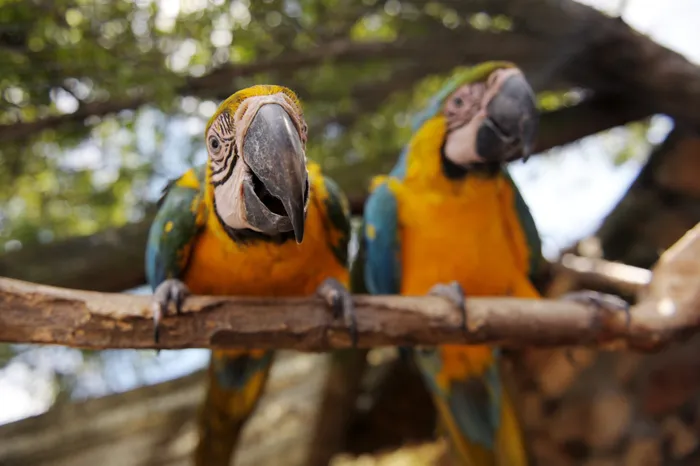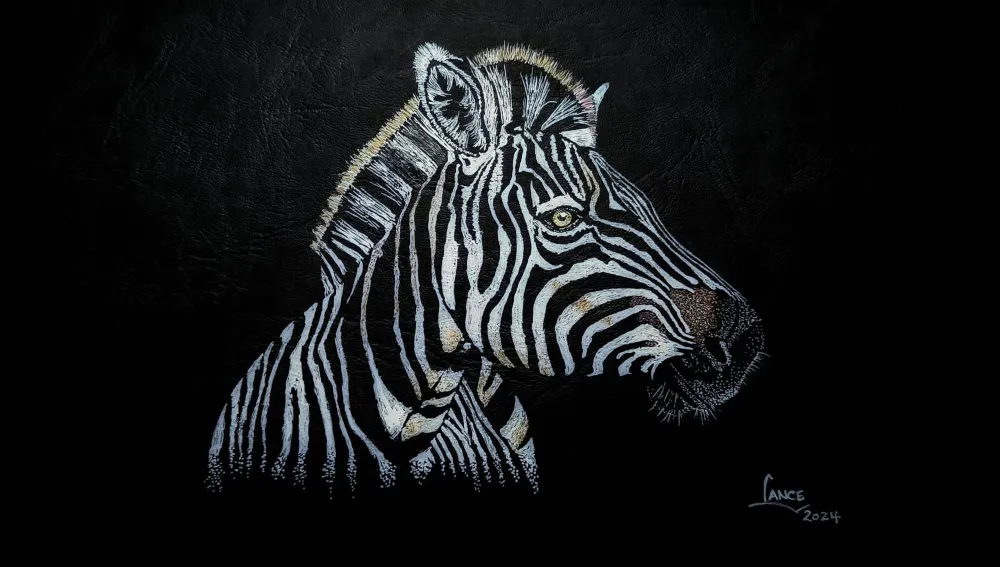Beware of bargain hunting this Festive Season

A pair of blue-and-yellow macaws. File picture: Armand Hough, African News Agency (ANA)
THIS year I have learned, by experience, that the scariest thing to do on Friday the 13th is to check one’s bank account.
In fact, things have become so bad that I even started considering selling my art, seeing as I have recently dug back into my art supplies and started sketching again after over two decades.
Now though my sketching is just a channel for me to unwind after a hard day at the office, my work is almost halfway decent. I am almost certain that I could sell one of my masterpieces for a few ‘clams’.

I see the eye rolls of the judgmental cynics who think I am being rather ambitious.
However, I base my statement on what happened in 2019 when a work of art – a banana duct-taped to a wall – sold for $120,000 (over R2.1 million). Back then, social media erupted and the age-old debate about what constitutes art was reignited.
As if that’s not incredible enough, I have to inform our readers that that $120,000 piece of art titled ‘Comedian’ by artist Maurizio Cattelan has proven a sound investment for that collector when it sold for an eye-watering $6.24 million (over R11 billion) at a Sotheby’s auction in New York in late November this year.
Now, though I am happy for Maurizio as well as the lucky investor who made the massive profit on his artwork, I am still scratching my head, in bewildered amazement.
I mean if this type of art is so valuable, what prevents a young township artist from attaching a carrot to a canvas using PresStick? Or what about sticking up a sausage with Sellotape? Or, for the more daring art critic, mounting a mosquito on a mat with a booger?
Maybe I could be a pioneer, during this time when the DFA is closed for the holiday season and open the world’s first Adventurous Adhesive Art School, and when I am rolling in the dough I wouldn’t have to worry about the incredibly confusing way our stores price items.
Honestly, these days it’s become an art to figure out how much you’re going to end up spending when visiting a store!
I mean, does anyone else remember a time when “SALE” simply meant that items in a store would be cheaper? So if something usually went for R15, you’d find it at the sale for R10, for example.
Life was so much simpler then.
These days, when one sees words like “bargain”, “sale”, “markdown” or “price frenzy” you’d better be prepared to spend a bit more, oddly enough.
Bargain price tags nowadays are all about: “Item usually R26, but now get three for R60” … But what if you only NEED one item? “Buy two and get the third at 50% off” … Huh? “Buy three and get the cheapest one free? … what the hell?
On Monday this week, I saw another ‘kop-krapper’: “Chips R69.99 each, but buy two for R99” … I wondered why they don’t just make the chips R20 cheaper.
I know, I know, there’s the belief that if you can sell three items instead of one, then things will fly off the shelves. But I happen to believe that if items on the shelves are made significantly cheaper, stores will have a hard time keeping up with the demand, simply because people LOVE bargains.
But just a word of caution: Bargain hunting could backfire.
I once heard a story of a woman who wanted to buy a parrot. Her heart sank when the pet store owner told her that the parrots were priced well over R2,000.
However, he told her that there was a Macaw on sale for just R150. He warned her, however, that the reason no one wanted the colourful bird was because it used to live in a brothel and used some ‘rough’ language. Unperturbed, as any good bargain hunter would be, she snapped up the offer.
On uncovering the bird’s cage at home, the parrot exclaimed, “Yaaay, a new @%#$ brothel.”
The woman found it hilarious. But not as funny as when her two daughters walked in and the parrot squawked: “Yaaay, new @%#$ hookers!” And they all got the giggles.
Just then, the husband walked in and the parrot squealed with delight: “Hey Charles, where @%#$ have you been? I haven’t seen you in weeks!”